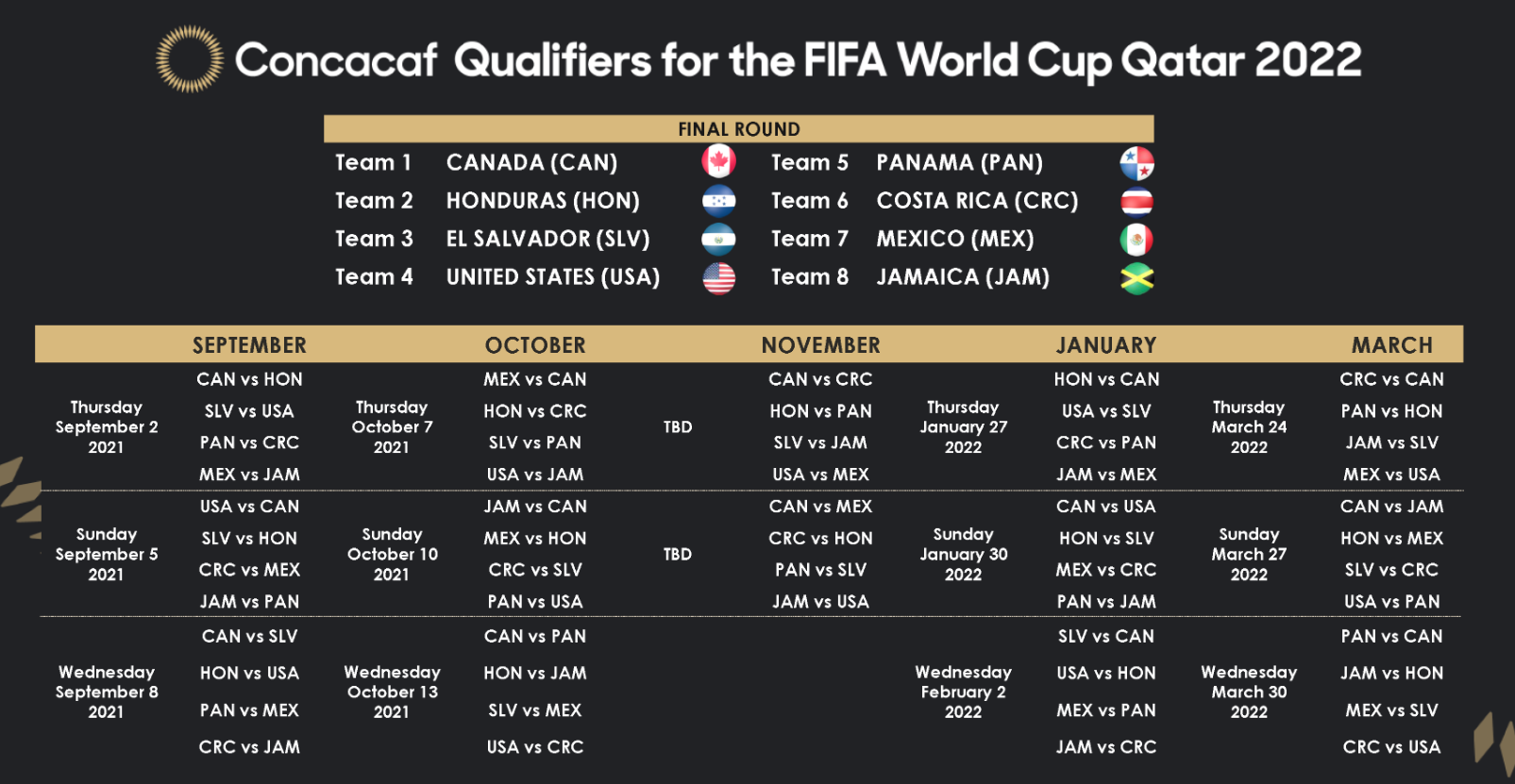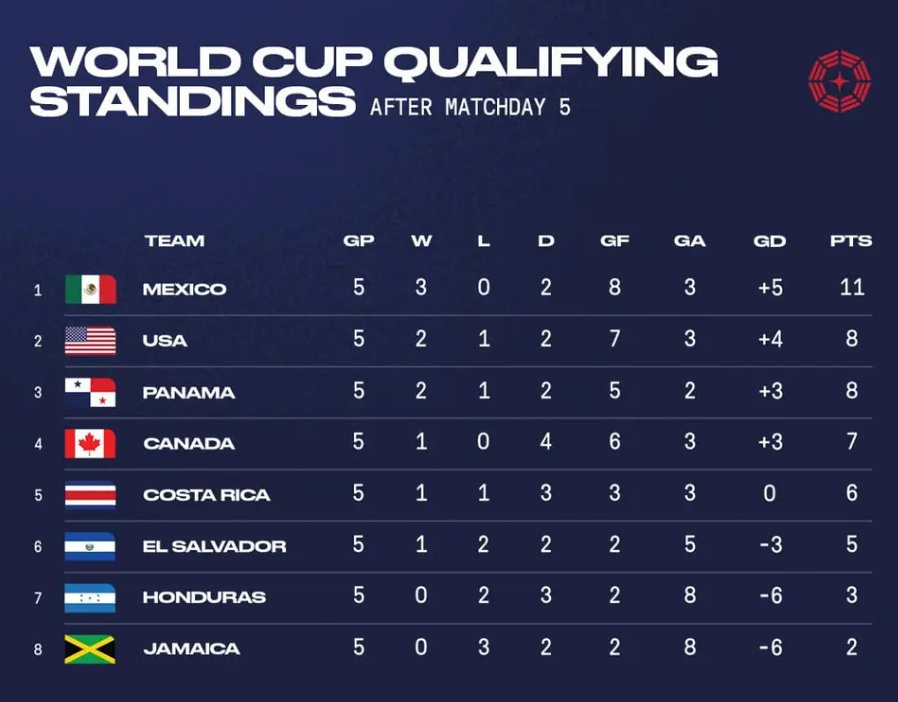The CONCACAF World Cup Qualification is a significant event that involves football teams from North, Central America, and the Caribbean. This competition serves as a pathway for these teams to secure a spot in the prestigious FIFA World Cup, which is considered the pinnacle of international football. The qualification process is incredibly competitive and dynamic, with teams putting their best foot forward to compete and secure their place in the World Cup.
The CONCACAF World Cup Qualification begins with the preliminary rounds where the teams ranked lowest by FIFA compete against each other. The winners of these matches then advance to the next stage, where they face teams that are ranked higher. This process continues until the final round, often referred to as the “Hexagonal”, due to the six teams that compete in it. The teams play each other twice in this round, once at home and once away.
The teams with the most points at the end of the Hexagonal round qualify directly for the FIFA World Cup. However, the journey does not end here for the remaining teams. They get another chance to qualify through the inter-confederation playoffs, which involve matches against teams from other football confederations. This adds another layer of excitement and competition to the qualification process and keeps the hopes alive for the teams that did not make it through the Hexagonal.
The CONCACAF World Cup Qualification is not just about securing a spot in the FIFA World Cup. It is also about showcasing the football talent and skills that North, Central America, and the Caribbean have to offer. Many players from these regions have used this platform to impress scouts and secure contracts with professional football clubs around the world.
The qualification process also gives the participating teams an opportunity to test their strategies, formations, and players against competitive teams. This helps them in identifying their strengths and areas of improvement, which is crucial for their performance in the World Cup.
Over the years, the CONCACAF World Cup Qualification has seen some epic matches, stunning goals, and unforgettable moments. It has produced teams that have gone on to make a mark in the FIFA World Cup, proving that this region is a force to be reckoned with in the world of football.
In conclusion, the CONCACAF World Cup Qualification is an important event that not only decides which teams from North, Central America, and the Caribbean get to play in the FIFA World Cup, but also provides a platform for players to showcase their skills and teams to fine-tune their strategies. It is a celebration of football that brings together teams and fans from different cultures and backgrounds, united by their love for the beautiful game.

Overview of the CONCACAF FIFA World Cup Qualifying Process
The CONCACAF FIFA World Cup Qualifying Process is a rigorous competition that determines the representatives of the Confederation of North, Central America and Caribbean Association Football (CONCACAF) in the FIFA World Cup. This process involves numerous rounds of matches, generally organized as tournaments, which are held over a span of several years prior to the main event. The total number of CONCACAF teams that secure a spot in the FIFA World Cup varies depending on the hosting nation’s continent and FIFA’s allocation decision, but it generally ranges from three to four.
The qualifying process is structured in such a way that the highest-ranked teams as per the FIFA rankings are given some form of advantage, such as direct entry into later stages of the competition. The initial rounds typically include the lowest-ranked teams, gradually increasing in competitiveness as the process progresses. The final round, often referred to as “The Hexagonal” or “The Hex”, includes the top six teams vying for the coveted World Cup spots. The exact format of the CONCACAF FIFA World Cup Qualifying Process can change from cycle to cycle, but the essential goal remains the same: to identify the strongest teams from North, Central America and the Caribbean to represent the region on the global stage.
It is a test of skill, endurance, and strategy, showcasing the best football talent the region has to offer. The process is closely watched by fans, analysts, and football enthusiasts worldwide, as it unfolds the journey of teams battling for a spot in the most prestigious football tournament in the world, the FIFA World Cup.
Qualification System and Format
A qualification system and format is a critical element in various fields, including sports, education, and professional sectors. This system generally entails a specific structure or criteria that individuals or teams must meet or surpass to progress to the next level. In the realm of sports, for instance, athletes or teams have to participate in preliminary rounds or qualifiers, where they compete against others, aiming to secure a set number of top positions that allow them to advance to the subsequent phase, be it regional, national, or international competitions.
In the academic sphere, the qualification system often involves passing examinations or meeting a certain standard of performance to proceed to the next academic level or graduate. For instance, a student may need to achieve specific grades in their coursework and final exams to qualify for graduation. Similarly, in the professional world, the qualification system might require employees to demonstrate particular skills, knowledge, or experience to qualify for a promotion or a particular job role.
The format of the qualification system varies depending on the field. It could be a single or double elimination tournament, a points system, or a series of tests or interviews. Despite the differences, the common thread is that these systems and formats aim to ensure a fair and standardized way of determining who progresses based on merit. They promote competitiveness, motivation, and a drive for excellence among participants. However, it’s crucial to ensure that these systems are transparent, fair, and free from bias to maintain the integrity of the process. Also, they should be flexible enough to adapt to changes and improvements as necessary, without compromising their core purpose of identifying and recognizing talent, effort, and achievement.

Historical Overview
A historical overview provides a comprehensive and chronological perspective on the development of a particular subject, event, or phenomenon over a period of time. This analysis not only traces the evolution of the subject matter but also highlights significant milestones, turning points, and shifts that have shaped its course. It offers an understanding of past events, mindsets, and societal changes, thereby facilitating a better comprehension of current trends or future possibilities. It is a comprehensive summary that encapsulates the essence of the subject’s journey through time.
For instance, a historical overview of technology would cover the transformation from the invention of the wheel to the advent of artificial intelligence. It would detail how each innovation led to the next, presenting a clear path from rudimentary tools to sophisticated machines. Similarly, a historical overview of a nation would delve into its formation, political and social evolution, and major events that impacted its trajectory.
However, the process of creating a historical overview requires meticulous research and a balanced interpretation of events. It should be devoid of personal biases and prejudices to ensure the portrayal of an accurate and objective picture. This is crucial in avoiding the perpetuation of misconceptions or distorted versions of history.
Historical overviews are invaluable resources for students, researchers, and anyone interested in understanding the past to make sense of the present and predict future trends. They provide a broader context, enhancing our knowledge and perspective of the world. They serve as a testament to human progress, struggles, achievements, and failures, reminding us of our roots and guiding us towards a more informed, enlightened future.
Early Beginnings (1934–1970)
The era spanning from 1934 to 1970 represents a formative period in the global landscape, characterized by significant historical events and profound cultural shifts. In 1934, the world was in the grip of the Great Depression, a severe worldwide economic downturn that had started with the Wall Street Crash in 1929. This period was marked by widespread poverty, high unemployment rates, and drastic reductions in industrial output. However, it was also a time of resilience and innovation as nations sought solutions to overcome these challenges. During the 1940s, the world witnessed the horrors and devastation of the Second World War. This was followed by the emergence of a new world order, with the formation of the United Nations in 1945 symbolizing a collective commitment to maintain international peace and security.
The post-war years also witnessed the decolonization of Africa and Asia, as many nations gained independence from their colonial masters. The 1950s and 1960s saw a boom in technological advancements, particularly in the field of space exploration. In 1961, Yuri Gagarin, a Russian astronaut, became the first man to orbit the earth, heralding a new era of space exploration. The 1960s also marked the height of the Civil Rights Movement in the United States, which sought to end racial discrimination and secure equal rights for all citizens. As the 1970s approached, the world was on the brink of significant social, political, and technological changes, setting the stage for the rapid transformations that would define the latter part of the 20th century and beyond.

Concacaf Nations Championship Era (1974–1990)
The Concacaf Nations Championship Era (1974-1990) represents a significant period in the history of football, particularly in the North, Central American and Caribbean region. This era marked the inaugural edition of the championship which began in 1963 and was primarily dominated by Mexico and Costa Rica. The championship was a major soccer tournament within the Concacaf region, where countries competed fiercely for regional supremacy.
The 1974 edition saw Haiti emerge as the surprise winners, marking a departure from the usual winners, and proving the competitive nature of the championship. In the following years, the tournament continued to grow in popularity and prestige, with several countries showcasing their best talents. The 1989 tournament, which was the last of this era, was particularly notable as it served as the qualifying tournament for the 1990 FIFA World Cup. This era was characterized by intense competition, displays of exceptional talent, and the emergence of new footballing powers in the region. Despite the championship being discontinued in 1991 and replaced by the Concacaf Gold Cup, the Concacaf Nations Championship Era played a pivotal role in the development and growth of football in the region.
Quadrangular Tournament (1994)
The 1994 Quadrangular Tournament was a significant event in the realm of international cricket that brought together four nations: Australia, South Africa, Pakistan and Sri Lanka. This was South Africa’s maiden appearance in Australia post apartheid isolation, marking a pivotal moment in cricket history. The tournament was conducted in two rounds, with each team playing against the others twice. The top two teams then proceeded to the finals.
Australia, the host nation, performed impressively throughout the tournament, emerging as the ultimate victors. They showcased their superiority in the game by defeating South Africa in the final match held at the Sydney Cricket Ground. This victory further solidified Australia’s position as one of the leading cricketing nations in the world. South Africa, despite their loss in the final, proved their mettle by making it to the finals, demonstrating their potential as a strong cricketing nation after their long hiatus from international cricket.
Pakistan and Sri Lanka, despite their best efforts, were unable to make it to the final round. However, their performances were commendable, with several individual players showcasing exceptional talent and skill. The 1994 Quadrangular Tournament was not just a series of cricket matches, but a historic event that symbolized the spirit of sportsmanship and international camaraderie. It also marked a significant milestone for South Africa, which was then re-emerging on the international sports scene. The tournament, in essence, was a true testament to the unifying power of sports, transcending geopolitical boundaries.
Qualification Statistics and Records
Qualification statistics and records are critical components in various sectors such as education, employment, sports, and many more. They provide a comprehensive overview of the abilities, skills, experiences, and achievements of individuals or groups, thereby helping in decision making. For instance, in recruitment processes, employers often rely on these data to determine the most suitable candidates for specific roles. These records may include academic achievements, professional certifications, skills, work experience, etc. In the educational sector, institutions use qualification statistics to assess the performance of students, the effectiveness of their programs, and even to determine admission criteria.
In the sports sector, qualification records play a significant role in determining the eligibility of athletes for certain competitions. These could involve previous performance data, personal best records, and other pertinent statistics. They provide a fair basis for comparing competitors and ensuring the standards of the competition are upheld.
However, it’s important to note that the process of collecting, recording, and analyzing qualification statistics and records should be done with utmost accuracy and fairness. Any inaccuracies or biases can lead to skewed results and unfair decisions. Therefore, appropriate measures must be put in place to ensure the data is reliable and valid.
Furthermore, the interpretation and application of these statistics and records should also be done with caution. Despite their importance, they are not the sole determinants of abilities or potentials. There are other factors such as soft skills, personal qualities, and potentials that might not be captured in these statistics. Thus, while qualification statistics and records provide valuable insights, they should be complemented with other assessment methods for a more holistic evaluation.
In conclusion, qualification statistics and records serve as essential tools for evaluating abilities and performances. However, their collection, recording, interpretation, and application should be done carefully, ensuring accuracy, fairness, and consideration of other important factors.